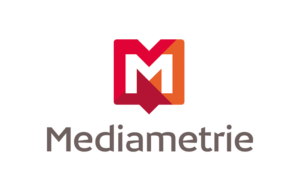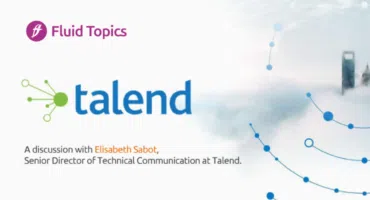Stephane Allizon, Head of the Technology Marketing and International Client Support Department, explains how Mediametrie reengineered documentation publication to improve customer satisfaction.
Stephane, how is content production structured at Mediametrie?
The Technology Marketing and International Client Support Department has two roles: product promotion, and support of Mediametrie’s international clients to whom we sell automatic audience measurement tools for TV, radio and Internet. Within the context of this latter role, we produce and deliver technical content.
The content is created by a transverse team of three that I oversee directly, including one translator. A dozen or so developers and product owners also contribute content related to the products they develop.
Historically, the team would use Office tools. Documents were converted to PDF and then provided to clients alongside our software and hardware solutions.
How was that working for you?
Not so well. First, we heard from clients who were having difficulties accessing the documentation for the solutions they had acquired. Users who needed help did not always know which content was available, and our portal did not make it easy to find it.
The second key point was that we needed to make support more efficient, allow our technicians to say “visit the portal, you will find such and such information in such and such location”, guide users toward granular information rather than point them toward a global document.
About Mediametrie

Founded in 1985, Mediametrie measures and analyzes audience behavior, media consumption and general market trends. Mediametrie’s business is growing in France and internationally on TV, radio, Internet, mobile, cinema and cross-media.
Stephane Allizon joined Mediametrie in 2009. Since 2013 he is heading the Technology Marketing and International Client Support Department.
So you redesigned documentation publishing?
Indeed. One of the goals of the new portal was to make it easy for our clients to access that documentation.
We also realized the value of making publication fluid, without relying on IT staff – who are always very busy – to update our documentation for our users in real time, as soon as written and validated. Essentially, provide a documentation that would always be up to date and shared between all project stakeholders.
We wanted therefore to standardize the publication process and to unify content consumption regardless of its source: Wiki, Office documents, forum, etc.
With my team, we drove this project by focusing on two dimensions: client service improvement, and documentation quality enhancement. To achieve this goal, we had to standardize content quality at its source. We needed to make writing easier and mandate a high level of quality while limiting the impact on writers’ productivity.
New tools and methodology were implemented. We selected Atlassian Confluence for writing, and we ported existing content. With Confluence, we have been able to write and manage our technical documentation much more efficiently, but the platform is not optimized for delivery. We therefore selected Fluid Topics for dynamic content publishing, with its native Confluence integration and with best-of-breed search.
The overall customer support improvement also resulted in other changes, for example a new ticketing tool.
Who are the target users of the documentation?
Our Fluid Topics portal is primarily used by technical teams at our clients. But readers include business users, who create panels for example, or drive the use of our systems at a management level. We find these levels of expertise in the documentation.
We provide access to documentation to all our customers. We made the choice to avoid complicated permission management, that generate little value but lots of frustration. Customers have access to all documentation types, business (user interface, etc.) and low level (API), and to the documentation of all versions.
In order to make access smooth, all content is classified by type: release note, reference documentation, API integration guide, etc. and tagged by product and version as to accelerate the search for relevant information.
Of course, we also make this public documentation available for internal users of our solutions: development and R&D.
Advanced semantic tagging of content is really powerful, and the search is blazing fast.
What are Fluid Topics’ strongest points?
One of the strongest features of Fluid Topics is the power of the search. I believe that any document needs to be accessible directly through the search bar. Navigating a complex tree map does not make sense. Advanced semantic tagging of content is really powerful, and the search is blazing fast while remaining highly relevant.
The other point I’d like to mention is that Fluid Topics was built for technical documentation, and is fully suited for getting value from this type of content.
Quick facts
Sources: Confluence Wiki and Office documents
Content: over 1000 topics in the portal, covering about ten products
Languages: primarily English, a few topics also available in French.




